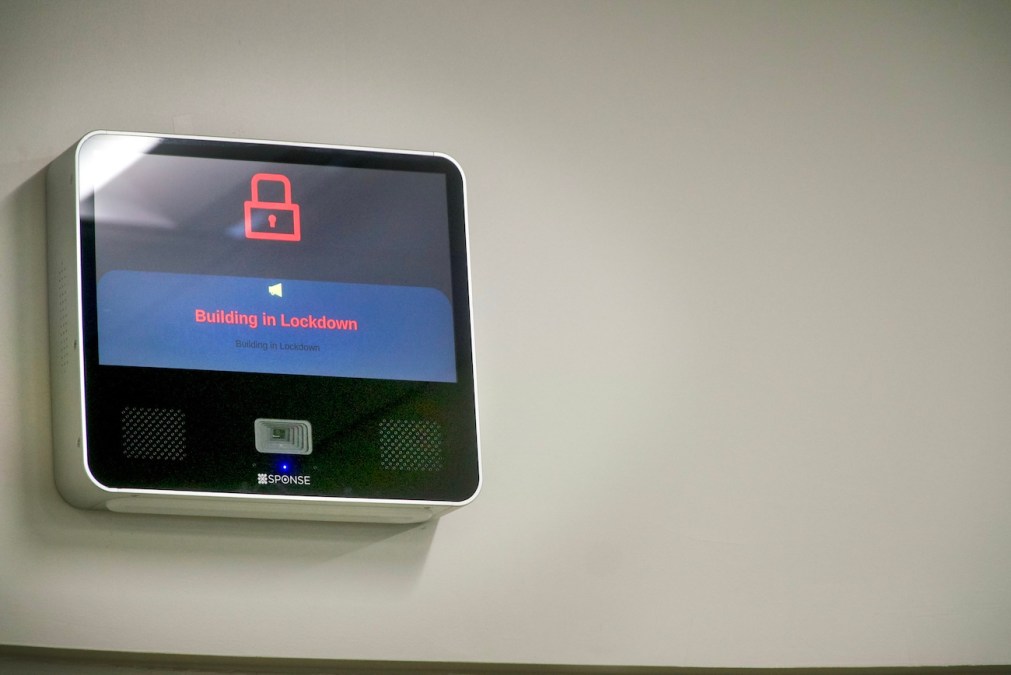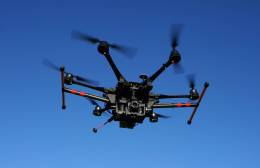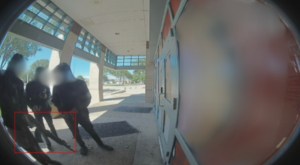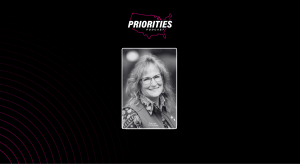NY school district’s AI-powered classroom surveillance worries civil liberties advocates

The New York Civil Liberties Union is sounding the alarm about a Long Island school district’s use of an artificial intelligence-based threat detection system in its classrooms. The organization claimed the system was installed without public disclosure and that it risks student privacy.
The Plainedge Union Free School District in North Massapequa, New York, this year became the first in the country to install the emergency response system from the tech company XSponse, which launched its “cutting-edge AI security ecosystem” in January. The system, which the district claims cost $250,000, offers a number of safety features, such as auto-locking doors and constant audio-monitoring by in-classroom microphones, which come with AI voice-activation for certain keywords.
The company does not publicly specify that its product alerts to things such as gunshots or raised voices, but instead claims the system uses automation to monitor for “environmental hazards.”
The system provides situational video monitoring through two cameras per classroom — one in the front of the room and one over head. According to the company, the cameras activate only when a lockdown protocol is activated.
When someone lifts the cover to a wall-mounted classroom control panel, the panel’s camera takes their photo. The company says the control panel covers help maintain student privacy.
School staff members are also equipped with smart badges equipped with panic buttons. When pressed, they send an alert and connect to a mass-notification system that first responders can use to make announcements. Law enforcement and school administrators can remotely control classroom video cameras. According to the New York Post, the camera feeds are fed into a command center in the district’s superintendent’s office.
‘Safety as the priority’
The New York arm of the American Civil Liberties Union said in March that the Plainedge school district completed a pilot program of the XSponse technology ecosystem. But Charlotte Pope, a fellow with the NYCLU, said the district’s Board of Education was unaware in June that the technology had been installed in classrooms. Pope claims the installation was completed quietly and that it was not until August, when the company hosted a demonstration for parents and community members, that most in the community became aware of the system’s existence in Plainedge schools.
However, a recording shows that the district held a presentation of the technology for the school board on June 12.
Edward Salina, the previous superintendent of schools, claimed the system was “voted on by parents and the public,” but the votes, according to the district’s presentation in June, were to approve $4 million for general school security upgrades over the next two years. A vote specifically for the XSponse system was not held.
Salina resigned on Sept. 12, according to meeting minutes. Carol Muscarella, a former district principal, was named to serve as interim superintendent. While no reason was publicly disclosed for Salina’s resignation, on Oct. 9 the school board shared a statement announcing an internal review of the financial and contractual agreements for the district’s safety-technology and security systems, including XSponse. (Neither Muscarella nor the school district responded to requests for comment.)
“We believe there is nothing more important for families than knowing that their school district has established safety as the priority – through robust security staffing, preparedness training, and state-of-the art systems and technology,” the statement read. “This critical imperative requires ongoing funding and operational expertise. That is why it is so important for those who are entrusted with district financial responsibility – starting with this Board of Education – to understand how the systems were designed, how they were contractually engaged and paid for, and why they were prioritized over other school security systems.”
‘Surveilling kids is bad’
Joanna Miller, director of the Education Policy Center at the NYCLU, said that while the district’s lack of transparency about the installation is concerning, a private company potentially profiting off the surveillance of children should also be alarming.
“Surveilling kids is bad. Raising children in an ecosystem where they are constantly under surveillance by the police department is not a direction that we should be going in as a society,” Miller said. “Communities around New York should be deeply skeptical of these tech vendors who are looking to get money, public money, out of the public school system to sell their product.”
In an emailed statement, a spokesperson for XSponse said that the company is a manufacturer that works with many integrators across the country, but it does not have a direct contract with the Plainedge school district. The spokesperson said questions relating to its contract and how the system is being used should be directed to the school district.
“In general, however, XSponse does not use any form of facial recognition technology or software,” the spokesperson’s statement read. “Cameras in classrooms are placed behind a physical shutter protecting student, teacher and staff privacy. When an emergency alert is triggered by a school, if the school chooses to, the shutters covering the cameras can be opened automatically. At the same time an LED light turns on indicating cameras are operating. During emergencies, the XSponse Security Ecosystem can optionally give first responders and police the real time information they need to respond to threats and bring immediate life-saving care to students, teachers and staff in specific locations within schools.”
Failure to deliver
School safety experts, and federal authorities, have repeatedly raised concerns about school safety technologies that are billed as panaceas for school shootings. Especially those that claim to use artificial intelligence. ZeroEyes, an AI-powered gun-detection software company, has come under scrutiny for billing its technology as a “proactive solution” to protect children from gun violence on public school grounds. The technology has triggered several false alarms that prompted law enforcement response, lockdowns and student panic. A 2023 DHS report noted that while the technology can provide a near-instantaneous alert, “it does not guarantee threat prevention.”
In November 2024, the Federal Trade Commission found that the AI-powered weapons-detection company Evolv “deceptively” advertised its weapons scanner to schools and others, overstating its technology’s capability to detect guns and knives among other weapons stowed in personal belongings, while ignoring harmless personal items.
The NYCLU’s Miller said that given industry’s track record, school districts, families and community members should be extra wary of believing the marketing from these companies. She said they should also think twice before spending taxpayer dollars on such technologies, especially amid a variety of challenges to federal education funding under President Donald Trump’s administration.
“What we’ve seen over and over is that these products often fail to deliver what they even promise,” Miller said. “But even if they did deliver everything that they promise, we have to be very skeptical about whether that’s where we want to be spending our precious education dollars, about whether this is exposing children’s information, including biometric information, to not only the police department, but to hackers or to bad actors. So in general, we are just urging a high degree of skepticism from parents, educators and school districts around the state not to be taken in by these sales pitches from from these various tech vendors.”
Corrected Oct. 23, 2025: Additional details were added to clarify when XSponse first presented its technology to the school district. Details were also added to clarify how the camera system and its control panel work.






